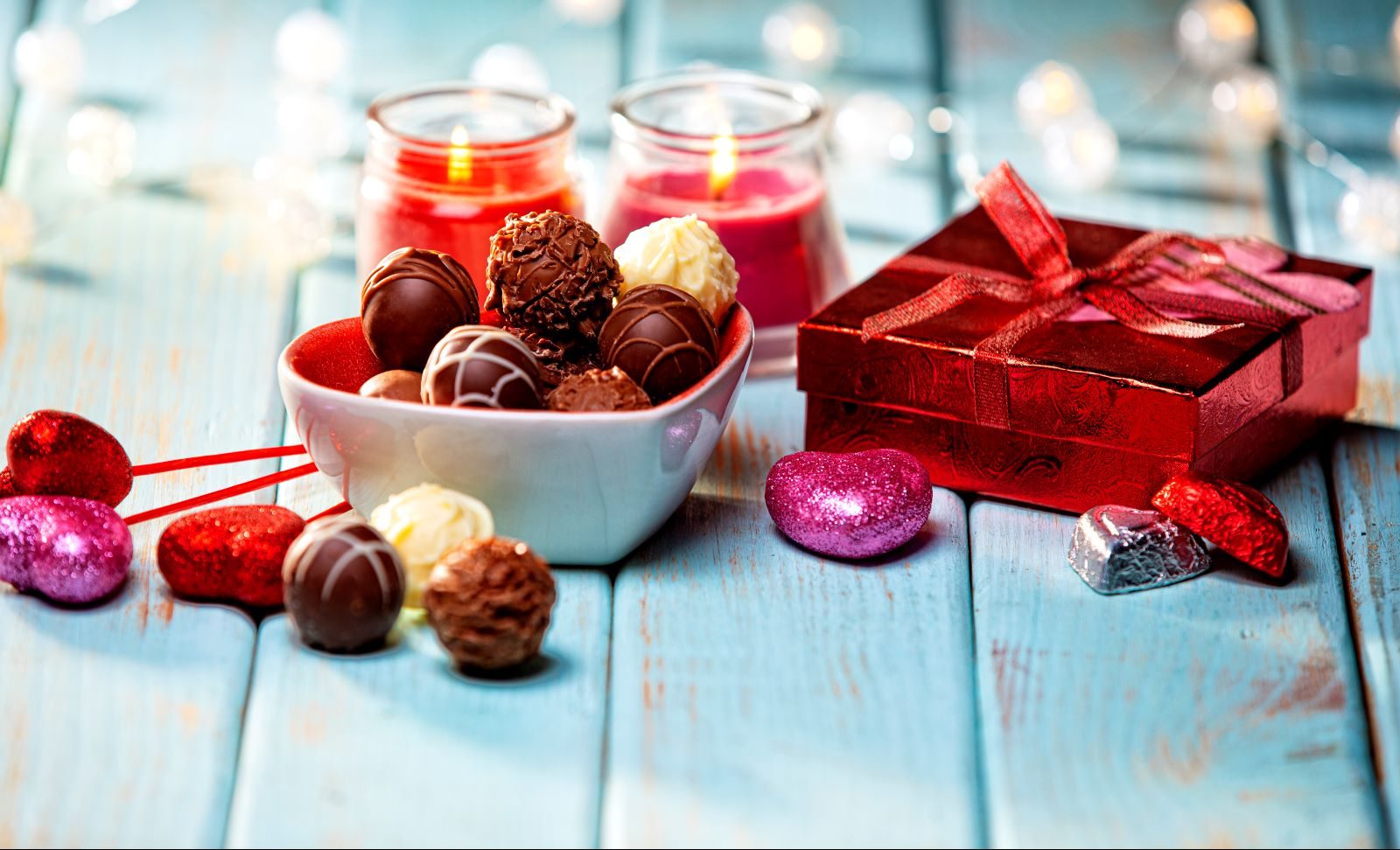Sweet treats abound on Valentine’s Day, but there’s one that rules them all. Whether it’s foil wrapped or in a box with a bow on it, chocolate’s all around us this time of year.
But if you’re hoping to get your Valentine the gift of chocolate AND good health, which type should you pick?
Jamie Allers, RD, of the Hartford HealthCare Digestive Health Institute, offers advice for selecting – and enjoying – the healthiest chocolate choices.
The clear winner.
When it comes to the healthiest chocolate, there’s really no contest, says Allers.
Dark chocolate is by far the healthiest form of the treat, containing the least sugar and, because of its cocoa content, higher levels of substances that protect the body’s cells.
If sugar is your number one concern, Allers recommends looking for higher percentages. For example, 90% dark chocolate has less sugar than the 70% version.
For those who are lactose intolerant or dairy-sensitive, dark chocolate is your safest bet since many brands offer dairy-free versions, unlike their milk and white chocolate counterparts.
There might even be health benefits to dark chocolate.
The bonus? Dark chocolate has the highest amount of cocoa, and in turn, the most flavonoids. This anti-oxidant fights free radicals which can damage cells in the body.
Flavonoids help by:
- Lowering blood pressure
- Keeping cholesterol under control
- Dropping the risk of developing blood clots
- Boosting blood flow to your vital organs
“With this in mind, the chocolate with the highest level of cocoa and its powerful flavonoids is the best for you. That is dark chocolate,” Allers says.
Processing cocoa to neutralize its sharp taste decreases the level of flavonoids, a process that affects the health benefits of milk chocolate, she says.
> Want more health news? Text StartHere to 85209 to sign up for text alerts
The competitors
So how do milk and white chocolate compare? Allers breaks down the differences:
Milk chocolate
- Contains various amounts of milk, sugar and other ingredients and flavorings. There is always more sugar and fat in this variety than in dark chocolate.
- Is made up of varying amounts of cocoa, but typically much less than dark chocolate. This impacts antioxidant benefits.
White chocolate
- Contains no cocoa solids, the substance we often think of as “chocolate.” Instead, it is made of cocoa butter (a fat extracted from the cocoa bean), milk and sugar.
- Because there is no cocoa, it does not have any antioxidant health benefits.
The advice
While most foods, even chocolate, are okay in moderation, Allers suggests gifting chocolate-covered fruit to your Valentine this year.
“You can make a mix of dark, milk and white chocolate to enjoy all three while reaping some of the benefits of the dark chocolate, and the fruit is sweet yet better for your health,” she says.
Many chocolates come with added flavorings, ingredients or fillings (such as dark chocolate with caramel filling, white chocolate with cookies or milk chocolate with almonds). Allers says you can save on the extra calories and added sugar by avoiding these, and sticking with simpler options.
Other Valentine’s Day sweets
When it comes to non-chocolate treats like conversation hearts, Allers suggests steering clear.
“Most are basically just sugar and, especially when compared to dark chocolate, there are not many health benefits to speak of,” she says.
However, if it brings your Valentine joy to gift you these treats once a year, she says enjoy them in moderation.
“There are other reasons we enjoy various foods during certain times of the year beyond the nutritional benefits,” she says.



